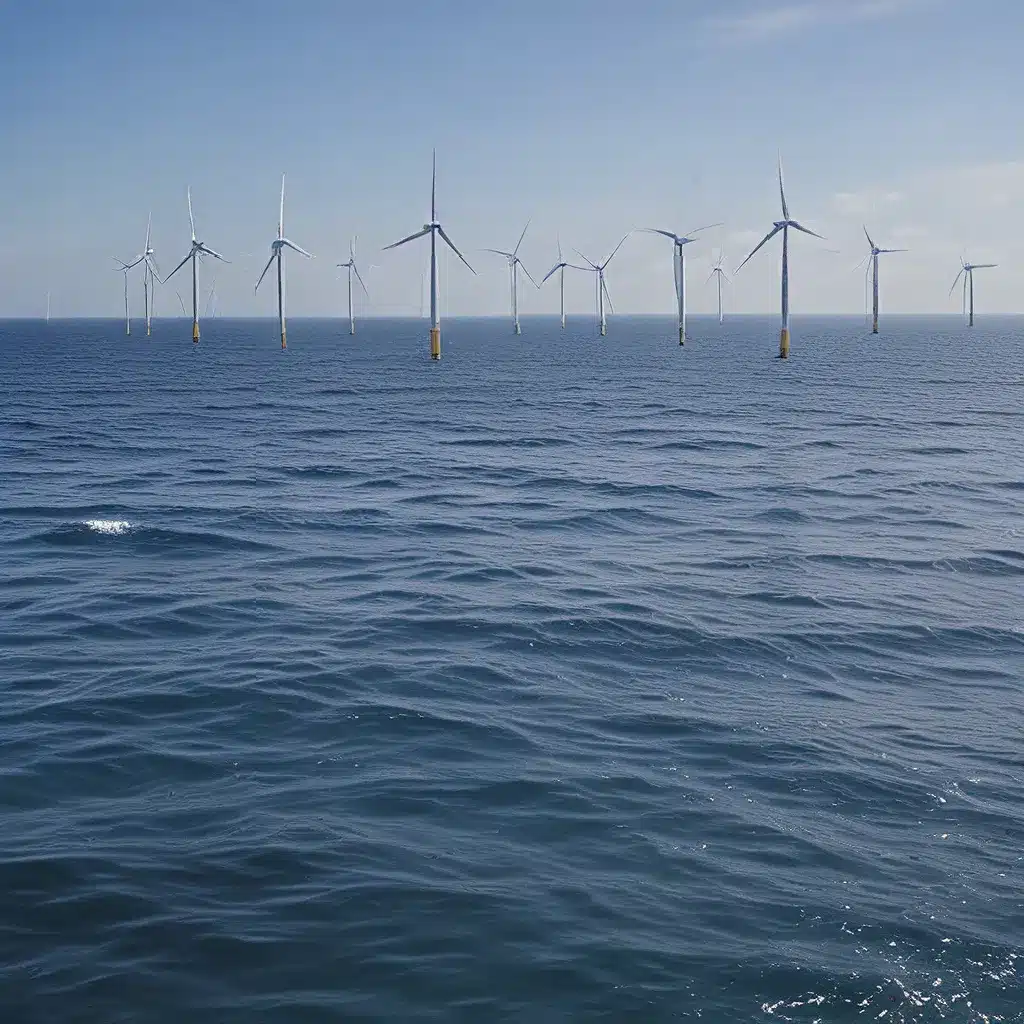
Unlocking the Power of the Seas: Exploring Marine Energy Solutions
As an environmentally conscious individual, I’ve long been fascinated by the vast potential of the world’s oceans to play a pivotal role in our renewable energy future. The idea of harnessing the natural movements and thermal properties of water to generate clean, sustainable power has always captivated my imagination. And recently, I’ve discovered that this vision is not just a pipe dream – it’s a burgeoning reality that is rapidly taking shape.
Marine energy, also known as marine and hydrokinetic energy or marine renewable energy, is a field of renewable power that taps into the kinetic energy of waves, tides, currents, and even the temperature differences within water bodies. These technologies offer a wealth of advantages over traditional energy sources, from their predictability and geographical diversity to their ability to power additional blue economy initiatives like desalination and ocean exploration.
Waves, Tides, and Currents: The Ocean’s Renewable Energy Arsenal
One of the most promising aspects of marine energy is the sheer abundance of its resources. According to the U.S. Department of Energy, the total available marine energy resource in the United States is equivalent to approximately 57% of all U.S. power generation in 2019. That’s an astounding statistic, and it highlights the immense potential that lies just off our coasts and in our waterways.
How exactly do these marine energy technologies work? Well, they harness the natural movement and thermal properties of water to generate clean, renewable power. For example, wave energy converters use buoys to capture the vertical and horizontal motion of waves, while tidal and current turbines leverage the kinetic energy of tides and ocean currents to spin generators. There’s even a process known as ocean thermal energy conversion that taps into the temperature differences between deep, cold water and surface water.
Interestingly, these marine energy resources are often highly predictable, making them an excellent complement to other renewable sources like wind and solar. Their daily and seasonal cycles can help stabilize the grid and ensure a reliable, clean energy supply. And with over 50% of the U.S. population living within 50 miles of the coast, these ocean-based resources are strategically positioned to power our coastal communities.
Beyond Energy: The Sustainable Blue Economy
But the benefits of harnessing marine energy extend far beyond just powering our homes and businesses. These technologies can also support the Sustainable Blue Economy – a concept that encompasses the sustainable use of ocean resources for economic growth, improved livelihoods, and ocean ecosystem health.
By generating clean energy while maintaining the beauty of our coastal vistas, marine energy technologies can complement other blue economy initiatives, such as:
- Studying the Unmapped Ocean: Marine energy infrastructure can serve as platforms for advanced ocean exploration and research, helping us unlock the secrets of the deep.
- Refining Desalination Systems: The power generated by marine energy can be used to drive more efficient and eco-friendly desalination processes, providing clean drinking water to coastal communities.
- Powering Aquaculture and Fisheries: Reliable, renewable energy from the oceans can support sustainable seafood production and ocean-based food systems.
In essence, the marriage of marine energy and the blue economy represents a symbiotic relationship – one that has the potential to transform how we interact with and steward our ocean resources.
Navigating the Challenges and Opportunities
Of course, as with any emerging technology, the path to widespread adoption of marine energy is not without its challenges. Researchers and engineers are constantly working to refine and improve the efficiency, scalability, and cost-effectiveness of these systems. And there are also complex regulatory and environmental considerations to navigate, as we strive to harness the power of the seas while preserving the delicate balance of marine ecosystems.
But the progress being made in this field is nothing short of remarkable. The U.S. Department of Energy and other leading research institutions are constantly pushing the boundaries of what’s possible, testing and deploying new technologies, and exploring innovative applications for marine energy.
And as someone who is deeply passionate about renewable energy solutions, I can’t help but feel a sense of excitement and optimism about the future of this industry. The potential of marine energy to transform our energy landscape and support the sustainable development of our ocean resources is truly awe-inspiring.
Charting the Course Towards a Sustainable Blue Future
As I delve deeper into this topic, I’m struck by the complex interplay of factors that will shape the future of marine energy and the Sustainable Blue Economy. There are technological advancements to monitor, policy and regulatory frameworks to consider, and environmental and social impacts to carefully weigh.
Ongoing research suggests that the integration of marine energy into the broader renewable energy landscape will be crucial, as it can complement other sources like wind and solar, enhancing the overall resilience and reliability of our energy systems.
At the same time, I’m mindful that there are diverging perspectives and areas of active debate within the scientific community. Some experts believe that the true potential of marine energy may be underestimated, while others caution that significant technological and economic hurdles remain before it can be widely deployed.
Ultimately, I believe that the path forward will require a careful balancing act, one that leverages the power of the seas while respecting the fragility of marine ecosystems. It’s a complex challenge, but one that I’m convinced we are more than capable of tackling – if we approach it with the right blend of innovation, collaboration, and environmental stewardship.
As I continue to explore this fascinating topic, I can’t help but feel a sense of wonder and optimism about the future. The possibilities are truly endless, and I’m excited to see how the renewable energy solutions of tomorrow will harness the potential of our oceans to create a more sustainable, resilient, and prosperous future for all.

